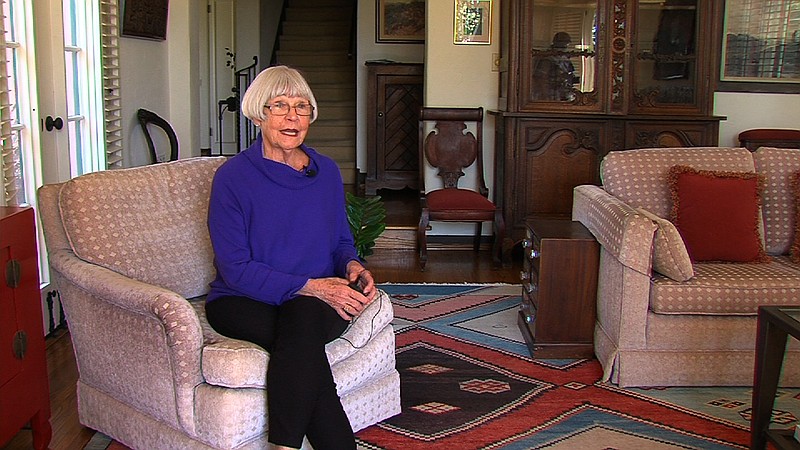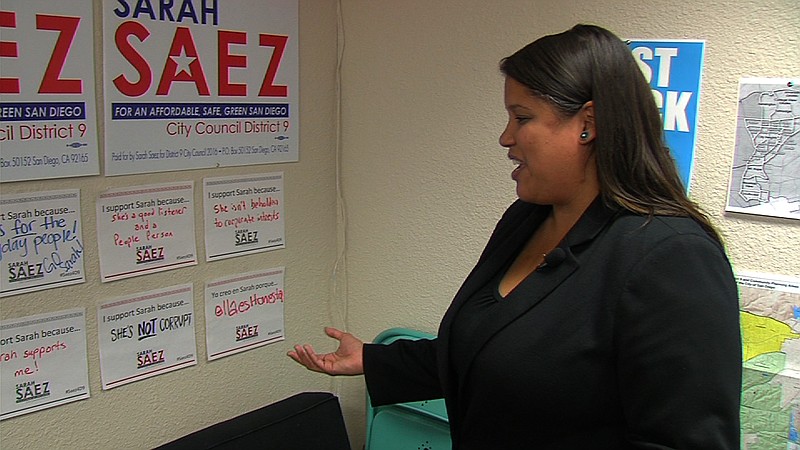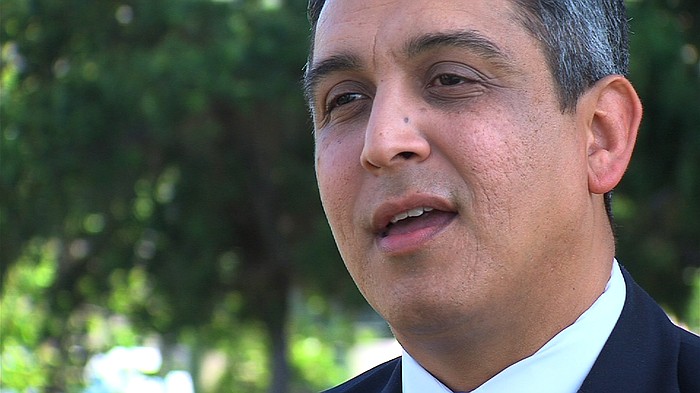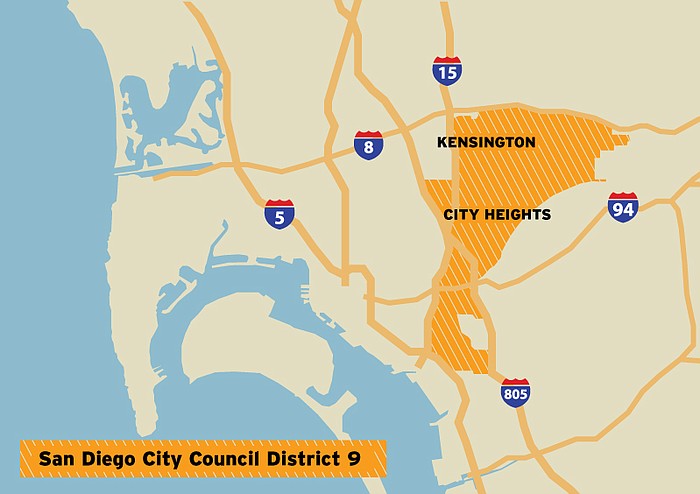For years, one wealthy and mostly white San Diego neighborhood has effectively decided who represents an entire City Council district — a district that’s 50 percent Latino.
The Kensington neighborhood wields the power in District 9 because the residents there vote. In the last general election, Kensington’s turnout was 30 percentage points higher than in the rest of the district.
This year may be different.
All the major City Council candidates in the district are Latino. They also either grew up in or live now in City Heights. The neighborhood is less than a mile south of Kensington but nothing like it— it’s majority Latino, almost half its residents are foreign born and its voter turnout was under 30 percent in the last general election.
On a recent afternoon, one of the council candidates, Sarah Saez, was decorating her campaign office in City Heights. Along with the typical red, white and blue posters emblazoned with her name, she also has handwritten notes from supporters, some in Spanish.
|
“Ella apoya a les maestros,” Saez read out loud. It means, “she supports teachers.”
You’d think it makes sense that a candidate in a majority Latino district would have Spanish campaign material, but Saez said it’s actually a departure.
She said campaign consultants urged her to focus on Kensington where they know people will turn out to vote. That meant the people in other neighborhoods “wouldn’t have a choice, and they just would have thought: Oh, it’s just the next person in line,” Saez said.
Four years ago, white incumbent Marti Emerald beat Latino Mateo Camarillo for the council seat. Emerald isn’t running for re-election.
Norma Sandoval, a community organizer from City Heights, hopes having candidates with the names Martinez, Flores, Gomez and Saez will draw in new voters. The top two vote-getters in the June 7 election will face off in the November general election. No one is expected to win outright in June by getting more than 50 percent of the vote.
“I’m hoping it’s going to get our youth excited about being able to see people that look like them running for positions that bring power to this community,” Sandoval said.
That’s true for Mohamud Osman, an 18-year-old City Heights resident whose family is from Somalia. He said it means a lot to be able to vote for someone from his neighborhood.
“They know where we’re coming from instantly,” Osman said. “We wouldn’t have to speak, in a way, because they know where we’re coming from, (being) low income, and how it feels to be in a struggle for awhile.”
Less than a mile from Osman’s home is a small park in the heart of Kensington with lush green grass and a playground. Council candidate Ricardo Flores grew up in City Heights, but he and his new wife now live in an apartment a block away.
“For me, Kensington holds a special place in my heart,” he said. As a child, he’d visit Kensington Video, which is still there and is where he began his love of film.
|
Flores is Emerald’s chief of staff, and she’s endorsed him. He moved to Kensington last April, around the same time Emerald announced her retirement. But he said he moved not to reach the neighborhood’s voters, but because it’s a good place to raise children.
While Flores is Latino, he’s not focusing his campaign on that.
“When you’re building a park, when you’re building a fire station, when you’re repairing a sidewalk, adding streetlights, I think at the end of the day you’re not just appealing to one group, you’re appealing to everybody,” he said.
Judy McDonald, a white 45-year Kensington resident, said she doesn’t care whether her council representative is from her neighborhood.
 Kensington resident Judy McDonald sits in her home, March 18, 2016. | Photo Credit: Nicholas McVicker, KPBS
Kensington resident Judy McDonald sits in her home, March 18, 2016. | Photo Credit: Nicholas McVicker, KPBS
“But if we were to discover that whoever is elected would ignore Kensington, there would be a rumpus,” McDonald said. “If we didn’t get police coverage or fire coverage, or lights were out, the people of Kensington know how to make their voice heard.”
When Emerald won the district last time, she campaigned in similar ways across the divergent neighborhoods, said her campaign manager, Xema Jacobson. She’d ask supporters to host coffees and would sit and talk to residents about their needs.
But on Election Day, Jacobson said, the low-turnout areas needed far more attention.
“With active voters, you can go in and identify them and follow up with phone calls, and that’s it,” she said. “With people who don’t vote all the time, you spend a bit more time with them. It’s not just a phone call, but on Election Day you go knock on their door, ask, ‘Do you need a ride? Do you need childcare? Do you need something to get you to the polls?’”
Georgette Gomez, the other candidate with enough fundraising and support to have a shot at the District 9 seat, said she’s not changing her message based on the neighborhood where she’s campaigning.
|
“There’s an issue in every neighborhood that people have been working on for over five years, if not longer,” Gomez said. “I don’t know a single neighborhood in District 9 that can say, government’s great.”
She said she’s ensuring she knocks on doors in every neighborhood across the district.
The same goes for Saez.
“We’re reaching out to people who have never voted. We’re reaching out to people who aren’t even registered,” Saez said.
She said it takes time and volunteers to campaign across the district’s diverse neighborhoods, but she is committed to spending time with City Heights voters who have been ignored in the past.
“If we continue to only reach out to Kensington, it’s eroding our democracy,” Saez said. “These voters become stronger and the ones we continue to ignore give up on the system.”
One thing that can be counted on in June and November is that Kensington residents will turn out to vote in the District 9 City Council race. What’s still to be determined is whether voters in other parts of the district turn out strong and add their voices to the election results.
KPBS Speak City Heights reporter Megan Burks contributed to this report.





